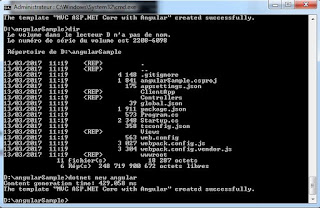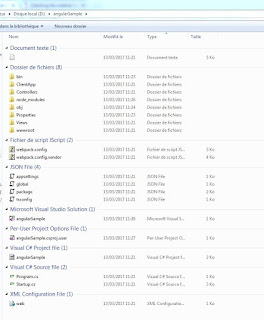18 March 2014 was my first day in ARDIA, another new experience for me after more than 4 years in a previous company.
Three years is considered a significant experience with ARDIA, where I learned a lot.
16 March 2016 I create Tunisian.NET Community to mount skills beginners.NET developers (Microsoft Technologies).
Some advice:
Don’t be afraid of being yourself! Believe in your ability whatever they said!
If you love what you're doing no matter what comes your way, or what problems you run into, you're going to be resilient and get through it.
Let your passion drive your career map direction. If you just started your career, do something that inspires you and gives you a sense of purpose.
As women, particularly if you have children that are on the cards, you have to expect that your career will take unexpected turns, and your priorities may shift.
I'm a mother of a wonderful kid called Rayen and an inspired husband. It's about the legacy I leave my kid, I hope to make him and her father proud and to be an example to them of what can be achieved with passion, support, tenacity, a lot of work and some luck for a unique goal is to make the world a better.
LOT OF “INSPIRATION. MOTIVATION and PASSION.”
Mastering a skill or technology is not as easy as we thought especially in a fast-changing industry.
I'm proud to be a woman, wife, and mother, face these challenges, sometimes I'm asking myself why I love programming? The answer is simple, I'm able to learn every day new technologies, I can directly impact someone's life by providing a solution, and the puzzles we solve translated into problems solved for others, I'm able to create beautiful products, solve problems and learn new tricks keeps. It is simply exciting!
A personal project reference for me that I created alone piece by piece: http://www.allotabib.net/
Writing blogs, recording some videos inspires me to be a better programmer and a better communicator, for this reason, I created my blog: http://hamidarebai.blogspot.it/ and a YouTube Channel: https://www.youtube.com/channel/UC31YxrncpmMma2_UuaWxkKw
I believe that designing, technology, and programming is almost like art and as creative not up to all. When I create components, modules, classes, entities, layers, then slowly build them up to come together and play well together.
I’m always in the phase of "The growth mindset" because I believe that my ability and intelligence can be developed and refined."
Next days, I have a lot of changes in my career with not only with ARDIA but with Microsoft.
I Say thank you for all peoples that believed in me as a technical woman involving year after year, and I said thank you to people that they tried to breaking my wing and decrease my technical value, this let me always be strong and confident.






































